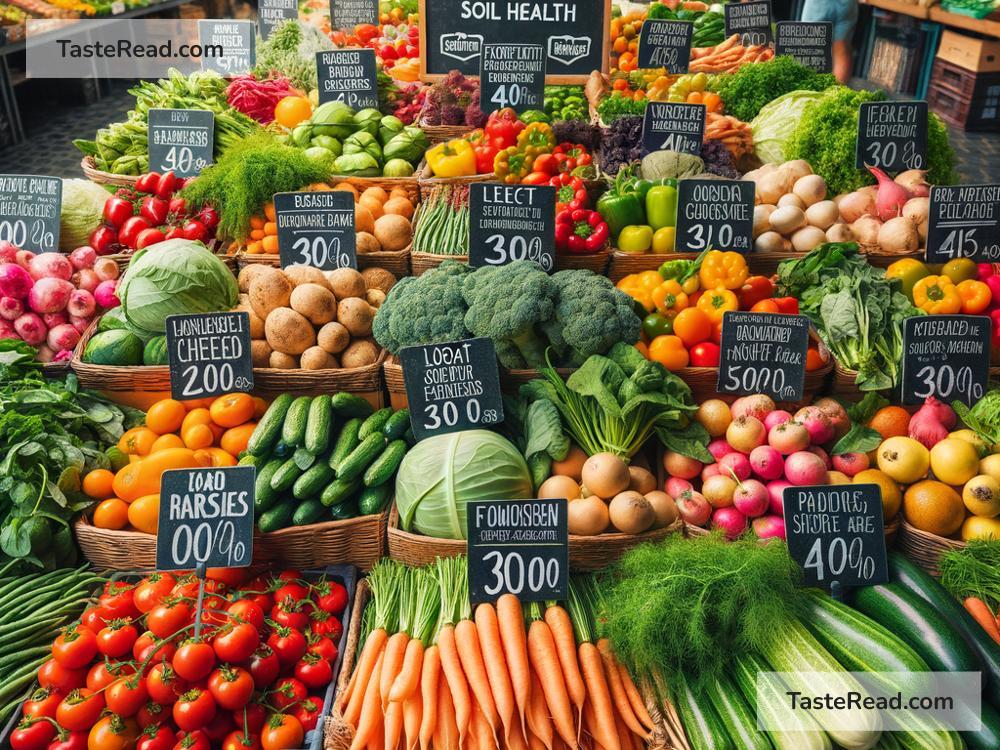How to Choose Ingredients from Soil-Health-Focused Farms
When it comes to eating healthy and ensuring our planet stays vibrant and viable, the origin of our food plays a crucial role. In recent years, there’s been a growing emphasis on soil health and its impact not only on the environment but also on the food we consume. This shift towards sustainability has led many of us to reevaluate where our ingredients come from. Soil-health-focused farms are increasingly becoming the gold standard for producing nutrient-rich and environmentally friendly foods. In this article, we’ll explore simple ways to choose ingredients from these farms, ensuring that your meals are delicious, nutritious, and kind to Mother Earth.
1. Understand What Soil-Health-Focused Farming Entails
Before diving into how to choose ingredients, it’s important to understand what soil-health-focused farming is all about. These practices involve methods aimed at enhancing the health of the soil, such as crop rotation, cover cropping, reduced tillage, and organic fertilizing methods. Healthy soil leads to stronger plants, which means better ingredients for your table.
2. Visit Local Farmers’ Markets
One of the easiest ways to start sourcing your ingredients is by visiting local farmers’ markets. Here, you can often meet directly with farmers who employ soil-health practices. Engage with them, ask questions about their farming methods, and learn about the types of crops they grow. This direct source of information can be invaluable in making informed choices.
3. Join a Community Supported Agriculture (CSA) Program
Community Supported Agriculture, or CSA, is a fantastic way to ensure a steady supply of fresh, locally-sourced, and sustainable ingredients. By joining a CSA, you buy a “share” of a farmer’s harvest in advance and then receive a portion of the produce throughout the farming season. This not only supports the farmers financially but also connects you to the rhythm of local agriculture.
4. Look for Certifications and Labels
When shopping at supermarkets or health food stores, keep an eye out for certifications and labels that indicate a focus on soil health. Certifications such as Organic, Regenerative Organic, and Demeter (Biodynamic) are good indicators that the products you’re choosing were grown with practices that aim to improve soil vitality.
5. Research and Support Brands Committed to Soil Health
Many brands now emphasize their commitment to sustainability and soil health. Do a little homework online to identify these brands. Often, they will share details of their farming practices and partnerships with soil-conscious farms on their websites. Supporting these brands means voting for soil health with your wallet.
6. Educate Yourself on Seasonal and Local Produce
Eating seasonally and locally not only tastes better but is also a step towards supporting soil health. Seasonal crops tend to be grown in a manner that respects the natural rhythms of the earth, reducing the need for unnatural interventions. Familiarize yourself with what grows in your area and during which seasons.
7. Grow Your Own
While not everyone has the space for a full garden, growing some of your own herbs, vegetables, or fruits can be both rewarding and illuminating. It gives you a firsthand appreciation for the effort it takes to raise crops, encouraging a more sustainable mindset. Plus, you have complete control over the soil and methods used.
8. Make Informed Choices When Eating Out
More restaurants than ever are focusing on locally sourced, sustainable ingredients. When dining out, choose establishments that advertise their commitment to using products from soil-conscious farms. Don’t hesitate to ask where the ingredients come from; a restaurant proud of its sources will be happy to share this information.
Conclusion
Choosing ingredients from soil-health-focused farms is not just a culinary choice; it’s a commitment to personal health and environmental sustainability. By understanding the basics of regenerative agriculture, supporting local farmers and CSA programs, looking for specific certifications, and being mindful of the seasonality of produce, you can make informed decisions that contribute to a healthier planet. Embarking on this journey enriches your dining table, supports local communities, and ensures that we’re all doing our part for a greener tomorrow. Remember, every meal is an opportunity to make a difference.


